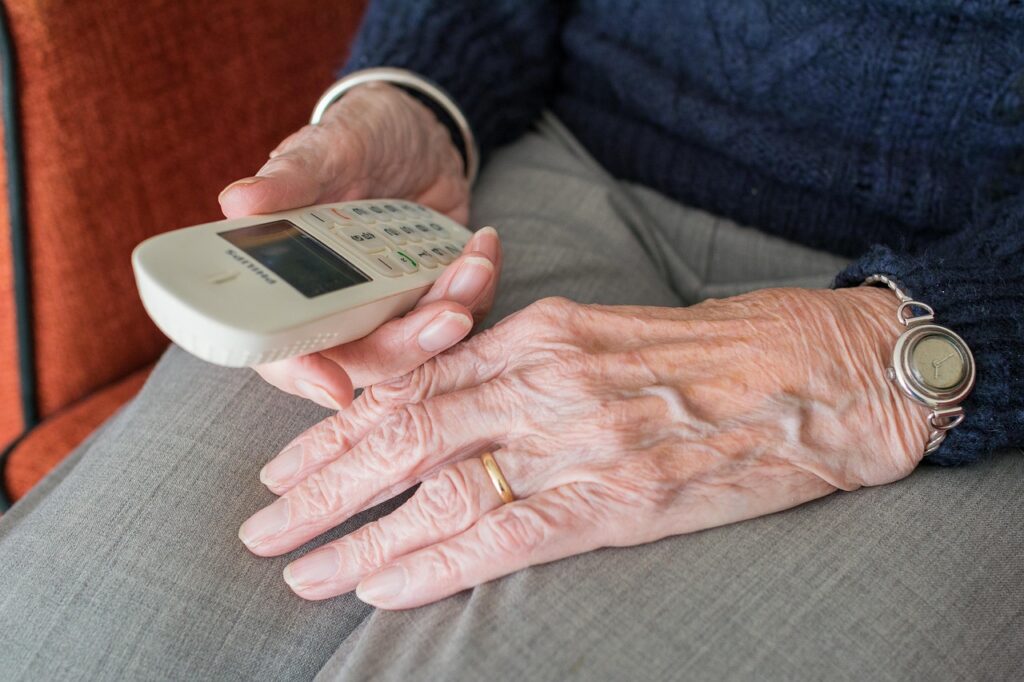
“Grandma, It’s Me”—Or Is It?
A Friendly Guide to Outsmart AI-Powered Impostor Scams
TL;DR: Scammers can now clone a loved one’s voice from a few seconds of audio and pressure you to send money fast. Your best defense is a pre-agreed family verification plan (code phrase + call-back rule), a calm 60-second script when a surprise “emergency” call arrives and knowing where to report in the U.S. and Canada. Set it up today, share it with family, and you’ll be ready to help without getting hustled.
If your phone buzzed right now and a shaky, familiar voice said, “Grandma, don’t hang up! I’m in trouble,” your heart would race. That’s exactly what scammers count on. And thanks to AI voice cloning, they can make a stranger sound eerily like someone you love with just a few seconds of audio pulled from social media or old voicemails. The U.S. Federal Trade Commission has warned that criminals are using cloned voices to fuel emergency and impostor scams, and they want you to act before you think.
Here’s the good news: you don’t need to be a tech expert to stay safe. You just need a repeatable plan you can use even when emotions run high.
Why this is spiking now (and why holidays are prime time)
- Voice cloning is easy to do. Consumer-grade tools can mimic a voice with a few seconds of audio, which scammers can lift from public posts. (Regulators and consumer groups have been pushing responses, including the FTC’s Voice Cloning Challenge and recent enforcement/education efforts.)
- Older adults are heavily targeted. In 2024 alone, U.S. elder-fraud losses reported to the FBI’s Internet Crime Complaint Center (IC3) approached $4.9 billion—a sharp jump from 2023. Impostor and “grandparent” emergencies remain common pathways.
- Canada is seeing the same patterns. The Canadian Anti-Fraud Centre (CAFC) has tracked a rise in emergency/“grandparent” scams, including text-message and social-media variants, and urges families to verify independently and report them.
Bottom line: scammers mix urgency, secrecy, and a convincing voice. Your job is to slow things down and verify, without guilt.
Your 60-second “Wait-a-Minute” Script (print this)
When a surprise “I’m in trouble” call/text arrives:
- Pause and breathe (5 seconds). You’re in control.
- Say this: “I’m here to help. I have to verify you first. What’s our family code?”
- No code or wrong code? Say: “I’m going to call you right back on your usual number.” Hang up. Call the number saved in your contacts (or another trusted relative).
- Still unsure? Ask two private questions a scammer wouldn’t know (pet nickname, last thing you cooked together).
- Never pay on the same call. No gift cards, no wire/e-transfer, no crypto, no couriers.
- If they claim a gag order or demand secrecy, that’s your cue that it’s a scam. End the call and verify with family or the police non-emergency line.
In Canada, CAFC specifically notes “broken phone” variations (texts or DMs from a “new number”) and “gag order” threats. Treat those as red flags and move to your callback plan.
Build your Family Verification Plan (it takes 5 minutes)
Step 1: Pick a code phrase. Something ordinary and memorable, not a password you use elsewhere. Share it with your inner circle only.
Step 2: Save real numbers. For kids, grandkids, close friends, doctors, and workplaces, make sure you’ve stored their verified contact info.
Step 3: Agree on the rule: No decisions or payments on an incoming call. You hang up and call back using the number already in your contacts.
Step 4: Add a backup tree. If you can’t reach the person, call one other relative or neighbor who can physically check on them.
Step 5: Rehearse once. A quick practice call makes it easy to follow the plan when emotions spike.
Know the tricks you’ll hear (and how to answer)
“Grandma, it’s me; don’t tell Mom and Dad.”
“I want to help. First, our family code, and I’m calling you back on your usual number.”
“I need bail money now; a lawyer/police officer will explain.”
“I won’t pay on this call. I’ll call the police and our family lawyer directly.” (CAFC and other agencies flag fake “officials,” secrecy demands, and requests for couriers to pick up cash.)
“My phone is broken; text me at this new number only.”
“I’ll call your saved number or another relative to confirm.” (CAFC documents this “broken phone” variant.)
Tech settings that help (U.S. & Canada)
- Let your phone help you screen. Many carriers and devices now show verification indicators (STIR/SHAKEN) that help identify spoofed caller IDs; still, remember that any number can be spoofed; verification is on you.
- Use your carrier’s spam-filter tools. Canadian carriers publish caller-ID spoofing tips and blocking options; check your provider’s page and turn them on. (Examples: Rogers, Freedom Mobile.)
- Limit public audio/video. If you post videos, consider friends-only privacy settings. Fewer voice samples online = fewer raw materials for cloners. (Consumer and industry warnings emphasize that scammers can work with very short clips.)
If it’s really an emergency, this plan still works
If the call is genuine, your loved one (or a real official) can answer your private questions, use the family code, and accept a call-back to a known number. Verifying doesn’t slow real help; it prevents misdirected help.
Report & recover (save these)
United States
- Report scams to the FTC (Consumer Advice has step-by-step recovery guides). If the online form is unavailable during a shutdown, use the FTC’s main contact page or return when service resumes.
- Report online/phone fraud to the FBI’s IC3 and call the Elder Fraud Hotline: 833-FRAUD-11 (833-372-8311) for one-on-one help.
Canada
- Report to your local police and to the Canadian Anti-Fraud Centre (CAFC) (online reporting system or 1-888-495-8501). CAFC explains what to do if you’re a victim and how to report even attempted scams.
Why reporting matters: It helps agencies spot patterns and disrupt organized fraud rings. The FBI and CAFC both note that losses are under-reported, especially in elder fraud cases. Your report protects others.
The “why” behind the plan (in plain English)
- AI ups the emotional stakes. When a voice sounds right, you’re more likely to act. Scammers exploit that with urgency. The FTC has warned consumers specifically about voice-cloned emergency and business-impostor scams.
- Losses are rising fast. Elder-fraud complaints and losses surged from 2023 to 2024, with billions reported to IC3. That’s only what’s reported.
- Verification is simple and effective. Agencies in both countries advise hanging up and calling back using a known number, plus refusing secrecy and pressure tactics. Your code phrase just makes it faster.
Your Holiday Readiness Checklist
- Family code phrase saved in everyone’s contacts notes.
- Callback rule agreed (no payments on incoming calls).
- Two “private questions” listed in your notes app.
- Carrier spam filtering on; voicemail greeting updated (“We don’t act on urgent phone requests—text won’t speed things up”).
- Report links handy: FTC Consumer Advice / Contact; IC3 + Elder Fraud Hotline; CAFC reporting page.
Tape the checklist inside a cupboard or by your desk phone. Share it with your adult kids and grandkids so everyone uses the same playbook.
Quick Q&A
What if the caller ID shows my (grand)child’s real number?
- Caller ID can be spoofed—treat it as unverified. Use your callback rule to a known number (or reach a relative who’s physically with them).
They sent a video that looks like my granddaughter.
- Deepfakes are improving. Use the code phrase and callback anyway. If they dodge either, that’s your answer. (Consumer and press reporting have documented recent cases of convincing AI fakes.)
I already sent money. What now?
- Call your bank/credit card immediately to try to reverse or freeze transfers.
- Report to FTC + IC3 (U.S.) or CAFC + local police (Canada) and keep all receipts and messages; agencies advise including as many details as possible.
Extra credit: tighten your online presence (5-minute tidy-up)
- Make older public videos friends-only so your voice is harder to clone.
- Remove your phone number and birthdate from public profiles.
- Tell relatives not to post travel plans in real time (scammers love that context for fake emergencies).
- Consider a quick read on AI-generated scams from reputable Canadian banking resources to refresh your radar.
If this helped, take five minutes to set your family code and callback rule, then share this post with your crew. After that, cue up the Beyond Retirement podcast: listen to past episodes, get ready for the new season, and suggest guests; we’re interviewing retirees about expectations vs. reality. Your story (or your neighbour’s) could keep someone safer this season.
Sources & further reading (links in text)
FTC Consumer Alert: Fighting back against harmful voice cloning. Practical signs and steps.
FBI (IC3) Elder Fraud data (2024/2025 highlights): Trends and reporting channels; losses to elder fraud rose sharply in 2024.
CAFC: Emergency/“grandparent” scam overview and current variants (texts/DMs, gag-order, broken-phone).
CRTC: Caller-ID spoofing basics and consumer protection tips.
FTC Data Spotlight (2025): Large-loss scams against older adults continue to climb.

